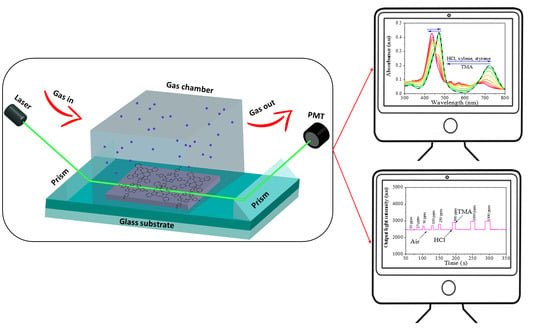Sensing Behavior of Metal-Free Porphyrin and Zinc Phthalocyanine Thin Film towards Xylene-Styrene and HCl Vapors in Planar Optical Waveguide
Abstract
Share and Cite
Kari, N.; Zannotti, M.; Giovannetti, R.; Maimaiti, P.; Nizamidin, P.; Abliz, S.; Yimit, A. Sensing Behavior of Metal-Free Porphyrin and Zinc Phthalocyanine Thin Film towards Xylene-Styrene and HCl Vapors in Planar Optical Waveguide. Nanomaterials 2021, 11, 1634. https://doi.org/10.3390/nano11071634
Kari N, Zannotti M, Giovannetti R, Maimaiti P, Nizamidin P, Abliz S, Yimit A. Sensing Behavior of Metal-Free Porphyrin and Zinc Phthalocyanine Thin Film towards Xylene-Styrene and HCl Vapors in Planar Optical Waveguide. Nanomaterials. 2021; 11(7):1634. https://doi.org/10.3390/nano11071634
Chicago/Turabian StyleKari, Nuerguli, Marco Zannotti, Rita Giovannetti, Patigu Maimaiti, Patima Nizamidin, Shawket Abliz, and Abliz Yimit. 2021. "Sensing Behavior of Metal-Free Porphyrin and Zinc Phthalocyanine Thin Film towards Xylene-Styrene and HCl Vapors in Planar Optical Waveguide" Nanomaterials 11, no. 7: 1634. https://doi.org/10.3390/nano11071634
APA StyleKari, N., Zannotti, M., Giovannetti, R., Maimaiti, P., Nizamidin, P., Abliz, S., & Yimit, A. (2021). Sensing Behavior of Metal-Free Porphyrin and Zinc Phthalocyanine Thin Film towards Xylene-Styrene and HCl Vapors in Planar Optical Waveguide. Nanomaterials, 11(7), 1634. https://doi.org/10.3390/nano11071634








